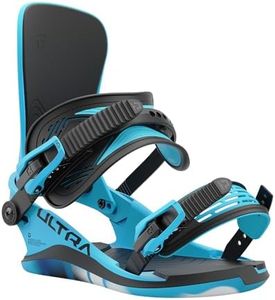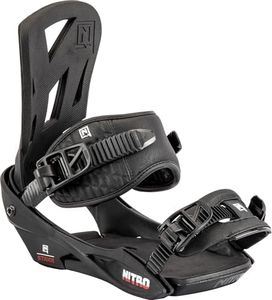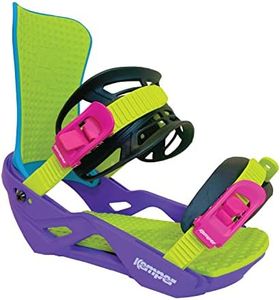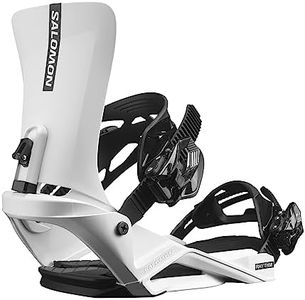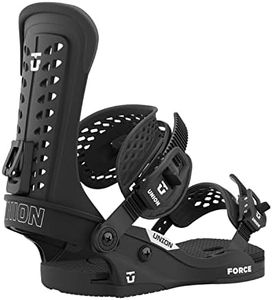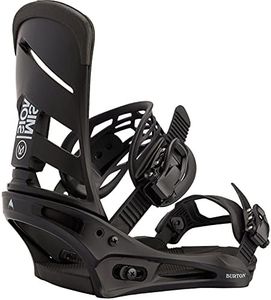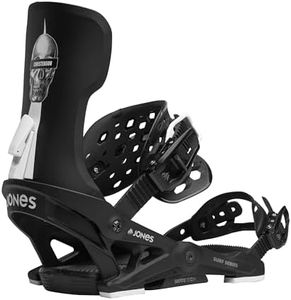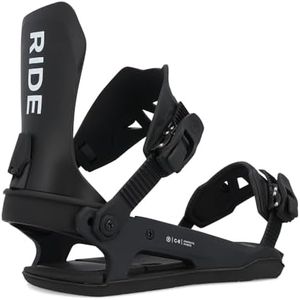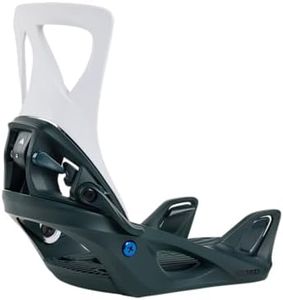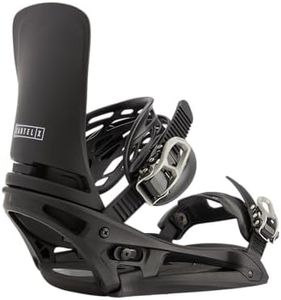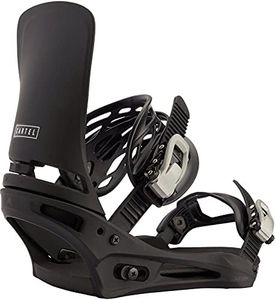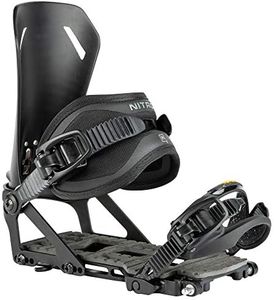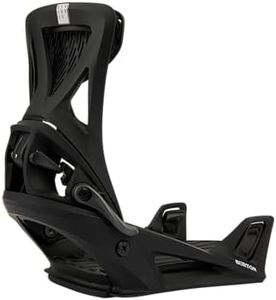We Use CookiesWe use cookies to enhance the security, performance,
functionality and for analytical and promotional activities. By continuing to browse this site you
are agreeing to our privacy policy
10 Best Snowboard Bindings
From leading brands and best sellers available on the web.Buying Guide for the Best Snowboard Bindings
Choosing the perfect snowboard bindings is essential because they are the critical link between you and your board. The right bindings will make your ride more comfortable, responsive, and enjoyable, while the wrong ones can lead to discomfort or poor board control. When shopping for bindings, think about your riding style, your experience level, and the types of terrain you'll be tackling most often. Understanding key specifications will help you match bindings to your boots and board, and ensure the best possible performance on the snow.FlexFlex refers to how much give the bindings have when you move your foot side to side or front to back. It's important because the flex determines how responsive your bindings feel. Softer flex is forgiving and easier for beginners or freestyle riders who want more movement. Medium flex offers a balance, good for all-mountain riders looking for versatility. Stiffer flex provides maximum control and responsiveness, which advanced or aggressive riders often prefer for higher speeds or technical runs. Choose a flex based on your ability level and riding style: softer for ease and playfulness, stiffer for power and control.
Binding CompatibilityBinding compatibility means how well the bindings fit with your board's mounting system. There are different systems such as 2x4, 4x4, Channel, and others. It's vital because an incompatible setup can't be mounted or may perform poorly or unsafely. When choosing, check which mounting pattern your snowboard uses, and make sure the bindings you pick can fit that pattern. Most newer bindings come with multiple discs or baseplates to fit various setups, but always double-check. Matching your bindings properly ensures safe riding and avoids hassle during setup.
Strap Type and AdjustabilityThe strap system secures your boots into the bindings, and its design affects comfort and security. Some bindings have traditional two-strap systems (ankle and toe straps), while others use cap straps or one-piece entry systems. Adjustable straps are important for dialing in the perfect fit for your boot shape. Beginners and those who value convenience may prefer simple, easy entry systems, while more advanced riders usually choose straps that offer fine-tuned adjustments for better responsiveness and support. Try to find a strap system that's comfortable for your foot and easy for you to use in cold or snowy conditions.
Highback DesignA highback is the vertical plate at the back of the binding that supports your lower leg. Highback height, shape, and stiffness play a huge role in board control and comfort; they help transfer your movements from leg to board, especially when turning heel-side. Lower, softer highbacks are good for freestyle and park riding because they allow more flexibility and tweaking. Taller, stiffer highbacks add support and control, better for carving and high-speed riding. Look at your riding style: park and freestyle riders go soft and low, while all-mountain or freeriders usually prefer higher, stiffer highbacks.
Baseplate CushioningThe baseplate is the part of the binding that sits directly on your snowboard, and its cushioning helps absorb impact and vibrations from riding. This is important for comfort, reducing fatigue, and protecting your feet and knees, especially during landings or rough conditions. More cushioning makes for a smoother, more comfortable ride, often preferred by freestyle and beginner riders. Less cushioning gives more direct board feel and response, which some advanced riders like for precise control. Choose based on how much comfort versus board feel you want when riding.
Entry SystemBindings come in different entry systems: traditional strap-in, rear-entry (speed entry), and step-on/quick entry systems. The entry system determines how quickly and easily you can get in and out of your bindings. Traditional strap-in systems offer maximum adjustability and customization, popular with riders who want a precise fit. Rear-entry or step-on systems are faster and more convenient, great for people who value quick transitions or have less patience for setup on the slopes. Think about how important speed and convenience are to you versus the desire for a custom, secure fit.
